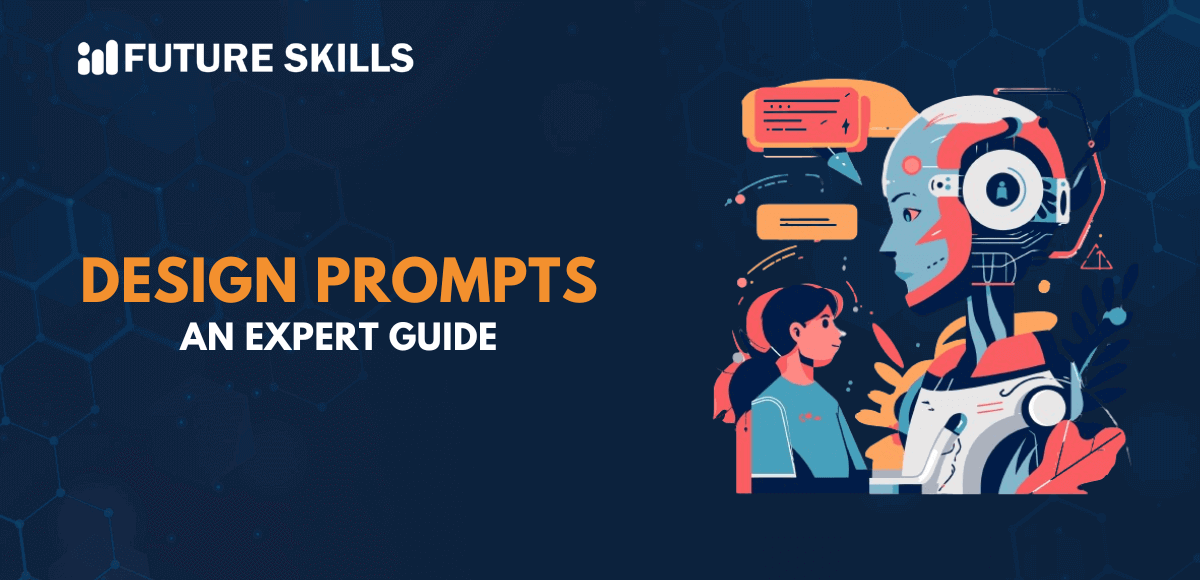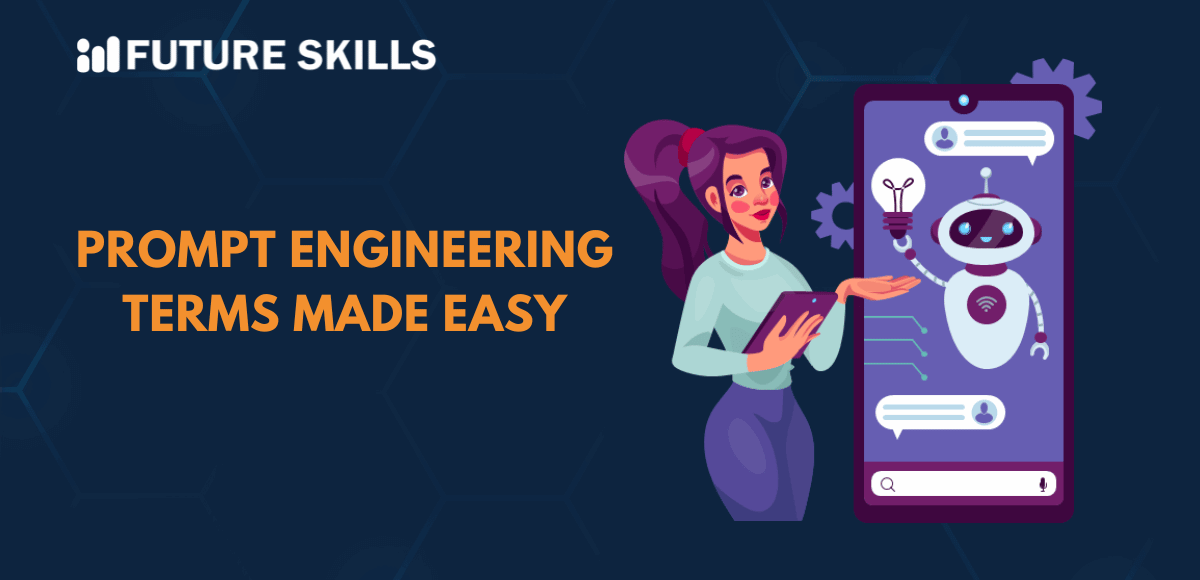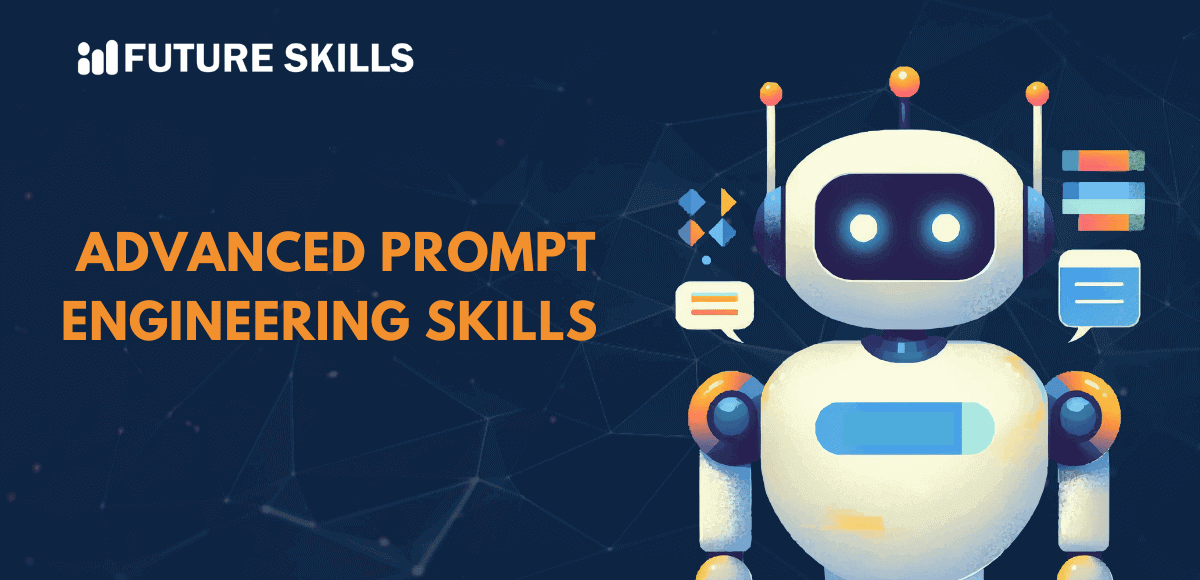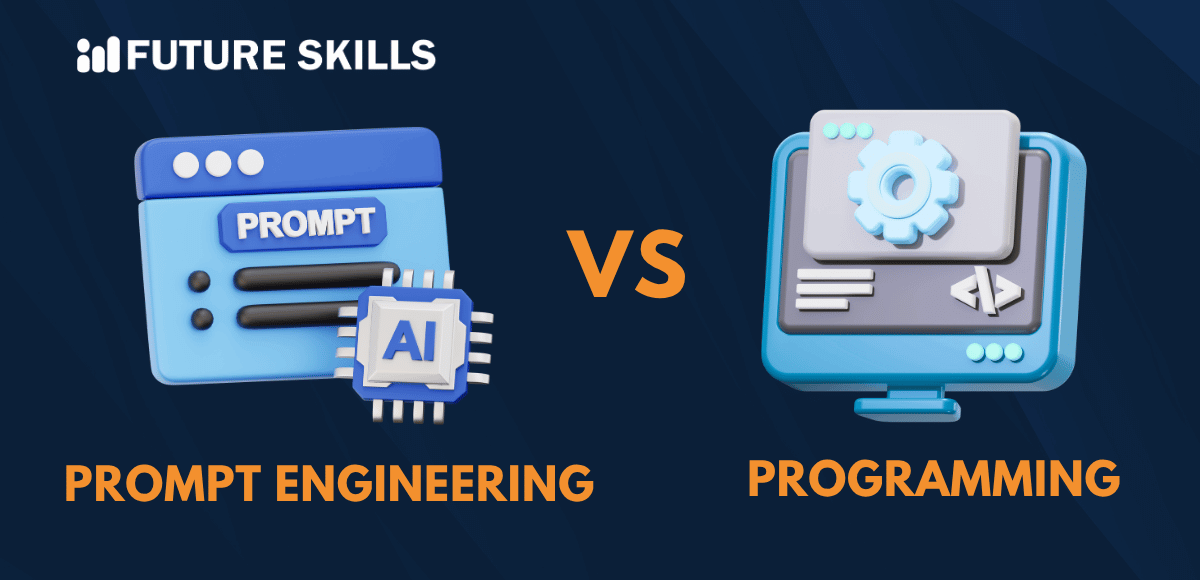Prompt design is a powerful process in AI that focuses on creating prompts for effective communication with LLMs. Large language models and generative AI have led to the rise of a new revolution in the domain of technology. With the right prompts, you can extract the best responses from LLMs and generative AI systems.
The importance of prompt design AI interplay also draws attention toward crafting the right instructions that can derive useful outcomes from language models, such as GPT. It is also referred to as prompt engineering and depends on choosing the right words, phrases, formats, and symbols to obtain the best results from AI models. The structure, context, and wording used in a prompt have a significant influence on the relevance and quality of AI outputs. Let us check out the important principles that can help you create the best prompts.
Empower yourself with Certified Prompt Engineering Expert (CPEE)™ program and learn advanced AI skills and prompt engineering techniques to excel in your career.
What is the Importance of Prompt Design?
LLMs and generative AI opened up new paths for interaction between humans and AI tools. The advantages and applications of generative AI gained worldwide attention following the rise of ChatGPT. As everyone wants to learn about LLMs, a design prompts guide is an essential resource for learning about one of the crucial aspects of their working mechanism. Prompts are an integral part of every LLM’s work. They are the instructions or messages for LLMs that can elicit a response from them.
Large language models work by leveraging deep learning algorithms that can perform different types of natural language processing or NLP tasks. The common terminology for the working mechanism of LLMs indicates that they use the ‘prompt and response’ model. Prompt engineering helps establish a new way of working with machines, which is a critical skill for success with AI.
You must design effective prompts to ensure that you can adapt models to specific use cases. In a way, prompt design can help you experiment with LLMs and achieve the desired responses. Well-crafted prompts can guide AI systems to generate relevant, specific, and high-quality responses. The role of prompts in eliciting the right responses from LLMs makes them an important tool for the future of AI technologies.
Level up your ChatGPT skills and kickstart your journey towards superhuman capabilities with Free ChatGPT and AI Fundamental Course.
Best Practices for Designing Prompts
Prompts are the instructions you can craft in natural English language. The right way to ask questions to the LLMs can make a huge difference in their effectiveness. The thought of choosing a design prompts generator might seem like the ideal choice. However, it is important to note that LLMs and generative AI are still taking baby steps in the domain of AI. Here are some basic prompt examples for LLMs that can help in generating the desired results effectively.
Imagine instructing a child to give a response to a question that has been created by another child. An AI generator for creating prompts could mean the same for an LLM. On top of it, interacting with a machine is not the same as a conversation between two humans. Therefore, you would have to unlearn everything you think you know about the English language and interactions. Here are the seven most important recommendations you must keep in mind to design the best prompts.
Learn everything about LLM agents that leverage an LLM for reasoning through a problem and creating a plan to address the problem.
-
Offer Clarity in Context
The first thing that you must know about prompt engineering for LLMs is that the AI system does not know you. Therefore, you have to provide context to the AI model to help it learn about you and your existing situation. Without maintaining a specific context, the LLM can lead to different types of results.
Your search for answers to questions like “How to design good prompts?” may lead you to confusing responses with an LLM. Therefore, you need to specify clearly why you want to know about designing good prompts and the objective for which you need the prompt design.
The context for a prompt is like the brief about background of a particular situation before you start working on it. For example, you can begin a website design project only after listening to the client’s requirements and the background of the project.
If you dive into the project right away, then you are likely to end up with some creative outputs or designs that don’t align with the project objectives. On the contrary, a detailed briefing about the project’s background and requirements can help the designer come up with perfect designs for the website. This example clearly demonstrates the necessity of context for effective prompt design.
-
Establish Clear Guidelines
The endless possibilities associated with AI can encourage anyone to look for new opportunities with prompts. However, trying anything without boundaries can lead to irrelevant responses from LLMs. Take any design prompts guide, and you will find that it is important to use some guidelines to guide the LLM in the right lane.
For example, you might need bumpers in your lane when you are bowling for the first time. It can increase the chances of hitting the pins without deviating from the intended path. In the case of prompt engineering, you can think of guidelines as the bumpers that would guide the LLM to desired responses.
-
Pay Attention to the Sequence of Prompts
Working with prompts in LLMs can be a challenging task when you get irrelevant responses after careful specification of context and guidelines. You can address the problems by working on prompts and shuffling the playlist according to your goals. For example, a design prompts generator would revolve around the fact that the sequence or order of instructions for the LLM would determine its response.
You can think of a music playlist and how you would make one understand the importance of instructions. While creating a playlist, you are likely to place your favorite songs at the top so that they will play first. Language models also work according to a sequence and weigh the different elements in their response in the order in which they were found in the prompt. You can try mixing up different elements in the prompt to include them in the right way in the responses.
-
Negative Prompting Also Pays Off
Most of the work in prompt engineering primarily revolves around telling the LLM what to do. On the other hand, the practice to design effective prompts would also draw your attention towards negative prompting. LLMs may hallucinate responses or make up information that may appear convincing to users.
In simple words, LLMs would never say that they don’t know anything about a specific topic or question. Therefore, it is important to instruct LLMs with prompts about what they should not do. Prompts must include the words, concepts, and phrases that an LLM must avoid in order to refine its responses.
Step into the world of AI and become a certified AI expert with Certified AI Professional (CAIP)™ program tailored for every AI enthusiast. Learn the complex concepts of AI from a fundamental level up.
-
Assign a Role to the LLM
The element of creativity in LLMs encourages the allocation of roles to them. For example, an LLM can be a writer, an actor, a doctor, or a director. The answers to “How to design good prompts?” would guide you toward the necessity of experimenting with different personalities for LLMs.
It is an interesting task to instruct language models on how to behave or write in the style of a particular person. The variations in responses of LLMs according to the persona specified in the prompt can help you determine the best course of action for designing your prompts.
-
Rely on Lists
The list of best practices and recommendations for design prompts also involves an emphasis on the necessity to forget the formalities of spoken language. On the contrary, you can use a more precise form of input, which LLMs would appreciate. Lists serve as a concise form of input for LLMs.
You can find an effective solution for design prompts guide based on expert recommendations to use lists for prompting. Some of the most common formats that work wonders for prompt engineering include comma-separated values, JSON data, key-value pairs, and bulleted lists. The use of lists in the prompts can ensure that the response is clear and cohesive.
-
Restart and Repeat Again
Always remember that a specific prompt that you think is perfect for your LLM might not be the right one. You would find that the response to a specific prompt would always differ from the desired goal to a certain degree. Using the same prompt multiple times in one chat session would lead to different responses.
The primary reason for such behavior is the assumption of context from historical dialogue exchange. This is a common detail in almost all language models. Therefore, it is important to improve the prompt design continuously to refine it according to your desired goals.
Final Words
The ability to design effective prompts can stand out as a promising skill in the continuously evolving AI labor market. Prompt engineers can guide LLMs to achieve the desired response for different tasks. However, it is important to understand that creating prompts is not a one-time process. You cannot become a prompt engineering expert without taking a few steps.
Prompt engineering is a continuously evolving process. It is important to pay attention to continuous efforts and dedication to improve the quality of performance by AI systems. You have to work iteratively on refining prompts to tailor LLMs for specific tasks. Learn more about prompt engineering, its significance, and the best prompt engineering techniques right now.






